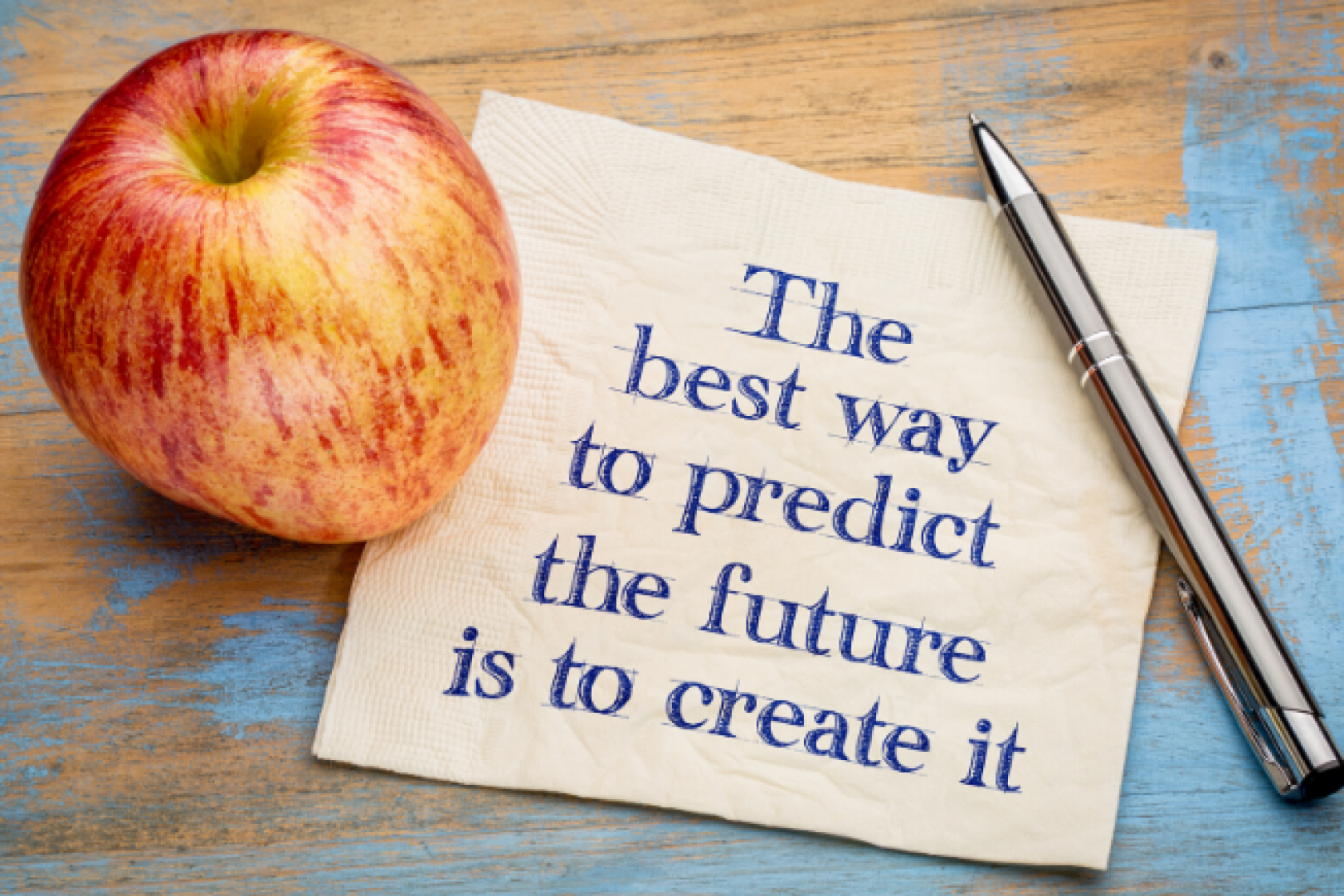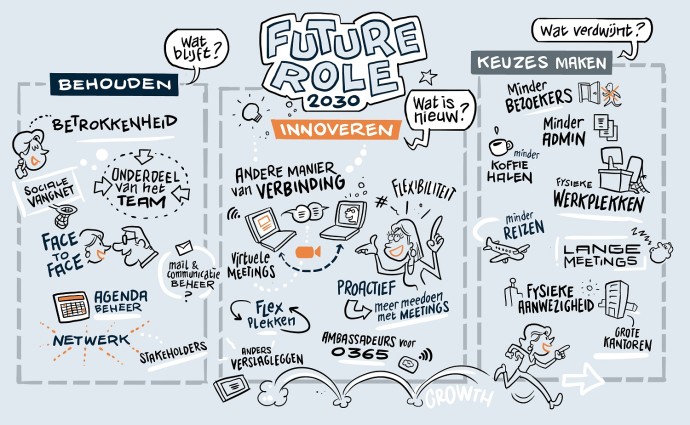What does the job of a management assistant look like in December 2020?
This question was the starting point during a webinar on 18 June 2020 to inspire 70 assistants from 37 member organisations and put them to work to shape and give substance to their own future.

Speaker and futurist Sara van Broekhoeven of the FutureTalentFactory set the tone this afternoon with her progressive approach and enthusiastic energy: "Take action and determine your own future." The webinar offered the first steps to answer this challenging question, using 2 future-predicting models: the scenario method and backcasting.
Reporting
In this article you will find the highlights of the webinar. For our members and participants there is an extensive report, the slides and many extras available. This includes the elaboration of the backcasting exercise with, among other things, a summary of the activities of assistants that will be retained in the (near) future, which are new and what will disappear. The report also describes the results of the survey into the challenges and uncertainties that many assistants struggle with. The recording of the keynote can be viewed here.
2 Predictive models: the scenario method and backcasting.
Predicting the future remains extremely difficult. There are two methods with which you can still get a grip on your future and with which you remain resilient. You have the choice to convert the future that happens to you (e.g. the corona crisis) into a future that you make yourself on the basis of the 2 future-predicting models: scenario method and backcasting.
Scenario Method
You can create your own scenarios. The scenario method teaches you to predict the future through narrative and fantasy use, using everyone's imagination. You will substantiate the fantasy by means of data and science to support it. Based on the scenarios, you can develop a step-by-step plan or strategy that will make you future-proof and remain future-proof. Scenario planning can be done, for example, for your own job, a product or service that has now come under pressure within your organization or the organization as a whole.
To get an idea of this method, Sara briefly touches on the 5 steps to create scenarios:
- Collecting trends. Find respondents and input to answer the central question: "What will work look like after corona?" What are trends: things that make people sentimental, insecure or see them as a huge challenge.
- Clustering trends. Cluster the input from 1 and make a top 5 of uncertainties and challenges.
- Assessing challenges in terms of impact. Be careful not to be too quick to talk about things that are challenges, but have little impact on the future. You have the best dialogue about the things that are challenging and have a major impact.
- Future scenarios. Plot the 2 most important scenarios on a cross-axis with the degree of uncertainty and impact.
- Storytelling. Storytelling; Make up characteristics in each quadrant, take a metaphor and come up with stories in the metaphor. This way of thinking (creatively) challenges you to think beyond 'normal', if necessary in these times and the times to come.
Have you mastered the scenario method as an assistant? Then your role as an assistant in a (virtual) meeting can be that you raise your finger and say: "Listen, I have a method to work out scenarios for the future that are not only based on data and Excel sheets, but also on imagination and creative ability. Can I facilitate that?" Give this moderator role a try, Sara urges. "Because coordinating business travel and facilitating/rebooking meeting rooms are no longer necessary (for a while), so you may have the space to reinvent yourself a bit.
Backcast method
What do you do with backcasting? You take a specific moment in the future (e.g. "What will my work look like in December 2020"), after which you will reason back how you are going to get there. It gives you an idea about the future, from a long-term perspective. It is a systematic method, based on facts. Don't go into wait-and-see mode. Come up with a plan yourself. The goal is to use the backcast to start a conversation with your manager, with your work environment. In that conversation, take them on a journey to the future that can be made.
In the webinar, during a work session, 8 break-out groups made a backcast for the following benchmark: "What will my work look like in December 2020?"
The purpose of a backcast is to answer the following 3 questions:
- Preserve. What remains?
- Innovate. What's new?
- Making choices. What disappears?
Below is a cool summary of the results from the work session:

This outcome shows that how you did it won't be the same again. And we can say with certainty that what assistants do, will continue to be necessary! Ask yourself the right question: "How do I reinvent myself and can I start doing what is needed now?" This also includes not doing things anymore, even while those around you continue to ask about the old work.
What is the influence of the current corona situation on the profession of the management assistant?
The following question was asked in the webinar: "What makes you insecure right now; What are your challenges and what makes you sentimental?" In order of importance:
- Connection
- Physical presence
- Oral communication
- Completion of the work
Follow-up session
On Thursday 10 September 2020 from 12.00 - 13.30 there will be a follow-up session with the following program:
- Sara comes to help with very practical tips to turn the common challenges and uncertainties into new energy and happiness at work.
- In the session of 18 June, we noticed that the cross-organisational exchange and sharing in break-out sessions about: 'How are you doing that?' and 'How are you?' was a great success. So in the follow-up session there will be another break-out, but this time without an assignment (for inspiration: you could exchange with each other how you shape the new work).
- And finally, we dive into the biggest challenge of assistants: 'How can you reflect the emotional component of connection in your job in a different way?'
The assistants with an account and who are connected to the network of the CIO Platform Nederland will automatically receive notification about the follow-up session on Thursday 10 September 2020. Are you working at one of our member organisations, but do you not have an account and would you like to participate? Please send an e-mail to bureau@cio-platform.nl.
Share this post!
